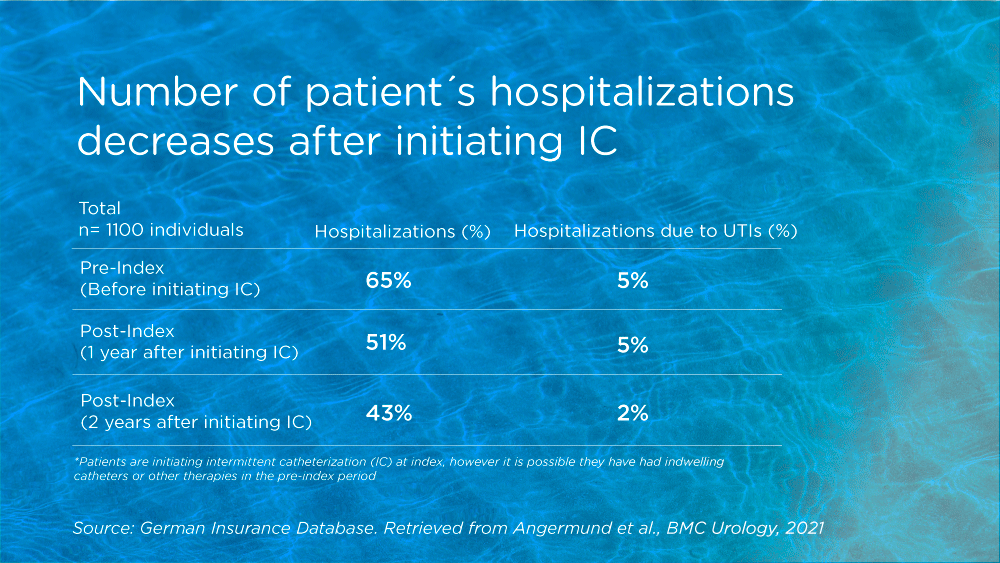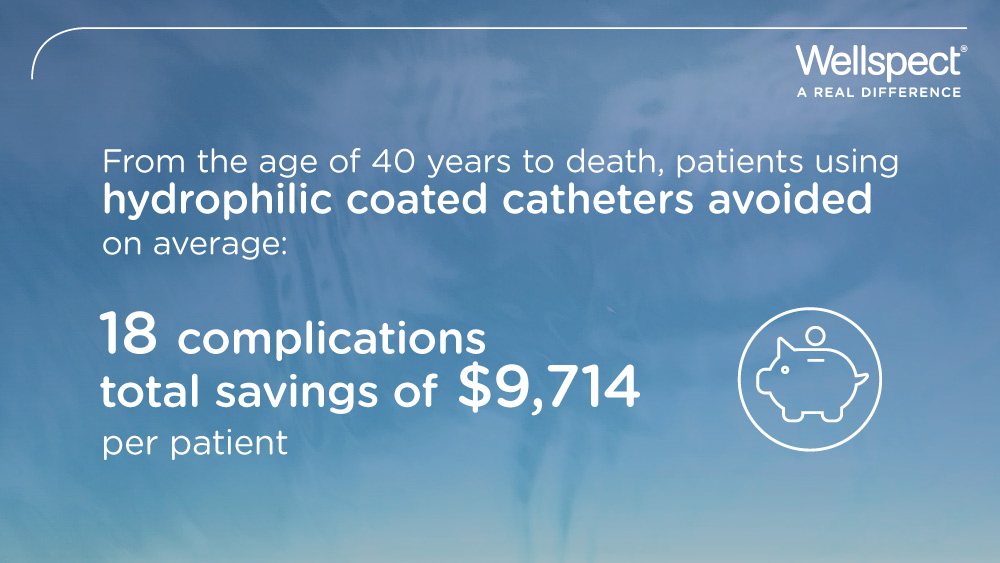Studies on intermittent catheterization (IC) with larger samples sizes are rare and this study provides real-world evidence on IC use, which may be used to derive recommendations for improvement of care. This is among the first publications of a 3-year observation period including time before and after initial IC.
Read MoreTopics: Urinary Tract Infection (UTI), Bladder management, Health Economy, Intermittent Catheterization
As many as 18 complications can be avoided from the age of 40 until death when using hydrophilic catheters instead of non-coated catheters. This translates into savings of almost $10,000 per patient.
Read MoreTopics: Health Economy, Intermittent Catheterization
The use of a urinary catheter is very personal and the patients' needs should be carefully investigated before a catheter choice is made. This study reveals that convenience factors are as important to users as medical factors.
Read MoreTopics: Health Economy, Intermittent Catheterization
Re-use catheters are still common in many countries, simply because of the lower price. But what's the cost in the long run when adding complications and quality of life factors into the equation?
Read MoreTopics: Health Economy, Intermittent Catheterization
Infections and urethral trauma are not only painful side affects for catheter users, it is also costly. Preventive efforts directed to the right patients could make a big difference. But who exactly are the right patients?
Read MoreTopics: Health Economy, Intermittent Catheterization







